A few days ago someone emailed me about a horn on eBay. They were wondering if I had ever heard of a French-made, Sté Cantator saxophone. I had to admit that I hadn’t heard the name before, and that the sax itself didn’t look familiar either.
Source: calebmom2012
Source: calebmom2012
As you can see from the above photo, the sax is decked out in pearls. This is not a feature we commonly see in vintage, French saxophones.
The sax looks very heavy, and almost over-engineered. This is more of a German design feature—especially an East German one. However, even the full pearl, B&S Weltklang horns, look light in comparison to this guy.
The seller had no light that he/she could shed on the pedigree of this horn. As a matter of fact, they were looking for information:
Wow is what describes this French made alto saxophone. Silver plated Ste Canator of Paris France. I have never seen one of these but i have really enjoyed bringing it back to its full beauty again. It will just sing like a song bird. Response, tone, and playability are just awesome. Quality of build is just unreal. Full pearls are just gorgeous and it has all new pads and setup. Original case is in great condition.The original ones are in the bag that will come with the sax. I can’t find a number on it but if any of you can shed some light on this saxophone and its history i will post it for everyone to read. If you are a collector or professional player please don’t miss the chance to own this beauty.
The rest of the photos show a silver plated, vintage sax that doesn’t appear to have been abused. However, these photos couldn’t help me identify the manufacturer. None of these features look familiar.
Source: calebmom2012
I thought perhaps saxophone historian, Pete Hales might have run across this brand name before, but he hadn’t either. Like myself, the nearly full pearl/French combo wasn’t something he was very familiar with. He too wondered if this horn didn’t have German roots.
So is this Sté Cantator alto a stencil horn? I don’t know. Was Sté Cantator a small, French manufacturer who only produced a handful of horns in their existence? Could be. That might explain the fact that its features don’t line up with known brands of horns. (Even the more obscure ones that Pete & I are familiar with.)
If anyone knows anything about this brand, or about the manufacturer of this alto, I hope they’ll chime in with a comment. Until then, this sax will remain an enigma.
If you like owning saxophone mysteries, you have until May 26 to get your bid in on this Sté Cantator alto saxophone. At the time of writing there were 11 bids already, with the high one being $179.50.

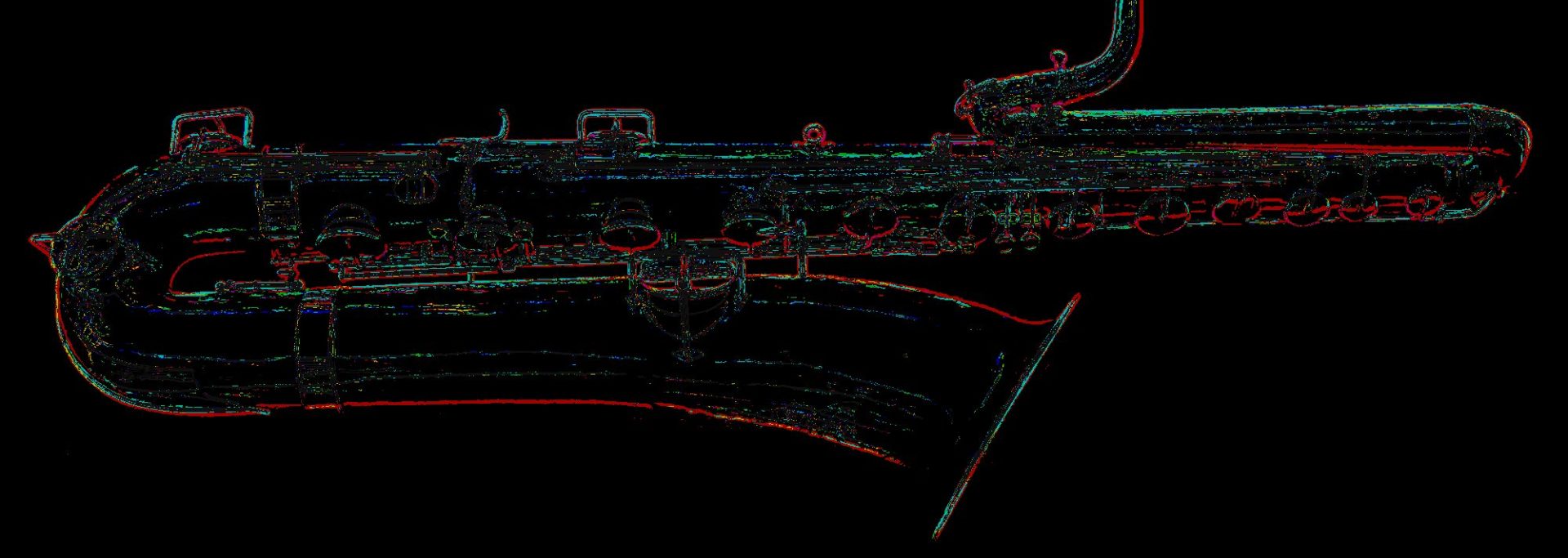




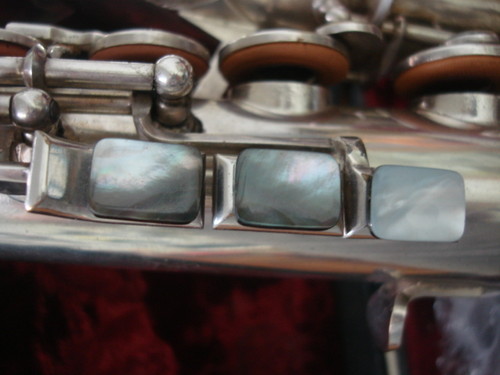


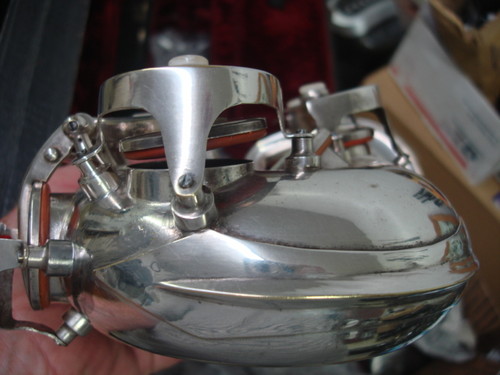

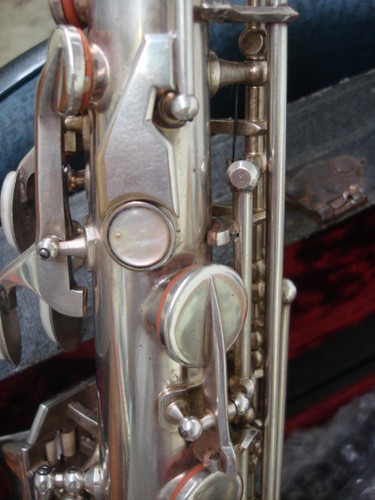
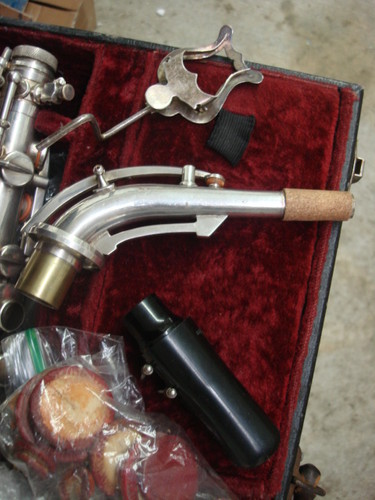



Update: Well we already know that this mystery alto sold. In the end there were 21 bids on the horn, with the high bid being $520.00. That was a good deal on a great vintage horn. Congrats again Don. Hope you’re still enjoying your sax.
Hi from the new owner of the Ste Cantator. This sax does not look like my Couesnon or Beaugnier. The closest I found to it is a Antoine Courtois on Dr Larry Ross’s site. The key guards are almost similar and the post that supports them appear identical. The Ste Cantator has no front F or lower F# key so I am inclined to think that it is an early Antoine Courtois stencil. Also, the Ste Cantator has full pearls but I don’t think the pearls on the side keys are original. They fit but do not seem the same quality and don’t fit the character of the horn. This is a high quality solid and simple horn and the extra pearls just seem too fussy. Now I’ll just play it and not worry about its breeding.
Hi Don.
Thanks for these updates. Most intriguing.
I have some info that was sent to me from a fellow in France, I just have to dig it out. Once I do, I’ll post it here. But you’ve absolutely got the right idea: enjoy the horn for what it is, and never mind who built it.
Here’s to your new horn Don. Enjoy :cheers:
Hi Helen,
I’ve got an information about “6 passage de Dantzig” (if you read French, here is the source:
http://clariboles-et-cie.blogspot.fr/2009/05/
pas-de-panique-de-nouvelles-pages-sur.html).
Charles Houvenaghel (the belgian acoustician who created the “Rationnel” Leblanc saxophone) founded in 1949 a society to sell his double-Boehm clarinet. This “Société anonyme du double-Boehm” (or “DB”) moved to 6 passage de Dantzig in 1955.
Of course I’m not claiming that the saxophone was stencilled for this society (there may have been an older “société Cantator” passage de Dantzig whose estate would have been bought by DB).
Just got the sax but I cannot shed any more light as to its origins. It is a solidly built horn. Much like a Conn. It is in great condition. Only a couple of small scratches. Even the old case is in very good shape. It seems to play best with a larger bore jazz mouthpiece. I used a Morgan 6L and a Rousseau Studio Jazz. Plays like an old Conn or like my Beaugnier. Looks like it will remain a mystery. Thanks to all the comments on this site about this horn. It helps to get a better idea as to what it is.
I won the ebay sale. Hope it plays as good as it looks. Just had to bid on this unique horn. I’ll compare it to my Couesnon when I get it.
Hi there Don. Welcome to my site.
Congrats on winning the horn! You did really well. Hopefully it is just as pretty in real life as it is in the pics!
Once you’ve had a chance to compare to your Couesnon, I hope you have a chance to come back and report your findings. It would be very interesting to find out what you think of it: How similar, or not, it is.
What type/model of Couesnon do you have? Roughly what vintage is it?
Hi Helen,
My Couesnon Alto has a gold lacquer body with silver keys. The S/N is 16159 and I’m guessing it is a later model (around ’70??).
Has a nice tone and great intonation but I think the keywork is a bit “clunky”. My collection is in storage for a few months while my house is being renovated so I may not be able to compare the Cantator to them. But I will report how it plays.
Well here are a couple of other theories as to the manufacturer…
I received an email from a gentleman in France who has a Couesnon Monopole tenor. In his email he sent me photos of the bell to body support brace, as well as the left pinkie cluster. Although neither is identical, both are similar in appearance to those seen in this Sté Cantator alto.
The same fellow also included this link to a current auction on eBay France. Note the keyguards (I’ve uploaded a photo with this comment for when the auction vanishes from eBay.)
The 2nd email I got was from Pete Hales. In the email he provides a couple of links. The first is to a Antoine Courtois alto (note the neck and key guard similarities). While the second link is to the sale of a Antoine Courtois alto on a French site. Again the key guards are very similar.
In his email, Pete wrote:
I think we can safely conclude that this Sté Cantator alto is a stencil horn. However, as to its true origins, without a photo of its “Made In France” stamping, we can’t say for sure who made it, but we are certainly getting closer.
Presumably:
Sté is an abbreviation for Société (which is group/society/company in english)
Pasge is an abbreviation for passage
Cantator means Singer in latin. (and is used for warblers in ornithology).
So the inscription is
Société Cantator
6 Passage Du Dantzig
Paris
XVe
Which is incorrectly spelled, as it’s actually Passage De Dantzig. You’ll find this easily on google maps.
So my guess is that it was a music shop/company in Paris, Called Société Cantator.
But who made it? Were they dealers commissioning instruments, or were tehy manufacturers. Perhaps someone with French contacts may be able to dig something up.
There seems to be no relevant entry in Langwill’s Index. The legend “du Dantzig” suggests to me that the horn may be Polish (Gdansk was formerly called Danzig or Dantzig). I’m guessing it may be a stencil horn, but have not seen anything quite like that style.